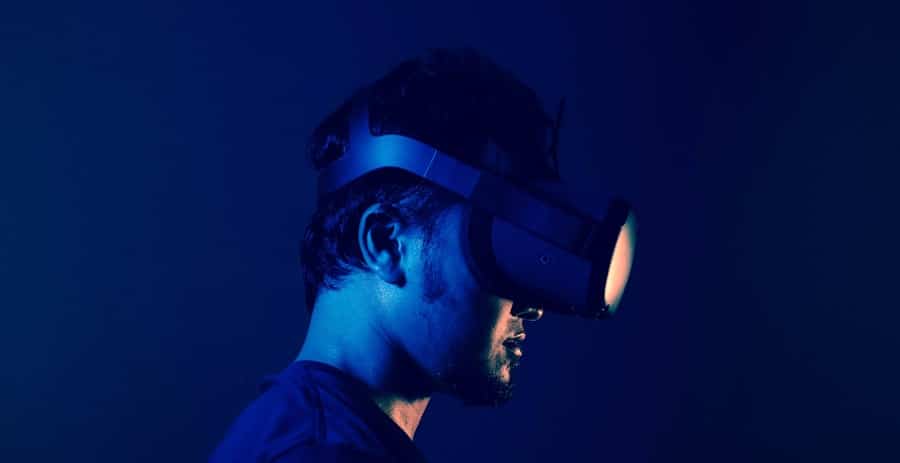The emergence of digital fashion has been a transformative phenomenon, particularly within virtual worlds. As technology continues to evolve, so too does the way we perceive and engage with fashion.
The rise of platforms like Second Life, Roblox, and Fortnite has allowed users to create, customize, and showcase their avatars in unique outfits that reflect their personal style. This shift has not only democratized fashion but has also opened up new avenues for creativity and self-expression. Digital fashion is not merely a trend; it represents a fundamental change in how we interact with clothing and identity.
In these virtual spaces, users can experiment with styles that may be impractical or impossible in the physical world. For instance, a user might don an outfit that glows in the dark or features animated elements that respond to their movements. This level of customization and interactivity has led to a burgeoning market for digital garments, with designers and brands recognizing the potential to reach audiences in innovative ways.
As a result, digital fashion is becoming an integral part of the broader fashion ecosystem, influencing trends and consumer behavior across both virtual and physical realms.
Key Takeaways
- Digital fashion in virtual worlds is on the rise, with more brands and designers exploring the potential of this new medium.
- Technology has had a significant impact on fashion in virtual environments, allowing for greater creativity and innovation in design and presentation.
- Virtual fashion shows are playing an increasingly important role in the fashion industry, providing a platform for designers to showcase their work to a global audience.
- Creating and selling digital fashion in virtual worlds has become a lucrative business, with designers and brands finding new ways to monetize their creations.
- Fashion influencers are embracing virtual fashion in social media, using it as a tool to engage with their audience and showcase the latest trends in digital fashion.
The Impact of Technology on Fashion in Virtual Environments
Technology has played a pivotal role in shaping the landscape of fashion within virtual environments. The advent of augmented reality (AR) and virtual reality (VR) technologies has enabled designers to create immersive experiences that allow users to engage with fashion on a deeper level. For example, AR applications can overlay digital clothing onto a user’s real-world image, allowing them to visualize how an outfit would look before making a purchase.
This technology not only enhances the shopping experience but also reduces the likelihood of returns, which is a significant concern in the retail industry. Moreover, advancements in 3D modeling and rendering software have empowered designers to create intricate digital garments that can be worn by avatars in virtual worlds. These tools allow for greater detail and realism, enabling designers to push the boundaries of creativity.
The use of blockchain technology has also emerged as a game-changer in the realm of digital fashion. By providing a secure and transparent way to authenticate ownership and provenance, blockchain ensures that digital garments can be bought, sold, and traded with confidence. This technological integration is fostering a new economy around digital fashion, where scarcity and exclusivity can be maintained even in a virtual context.
The Role of Virtual Fashion Shows in the Fashion Industry

Virtual fashion shows have become an essential component of the fashion industry, particularly in light of recent global events that have necessitated a shift away from traditional runway presentations. These digital showcases allow designers to present their collections to a global audience without the constraints of physical space or geographical limitations. Platforms like Instagram Live, YouTube, and dedicated virtual environments have hosted innovative fashion shows that blend technology with artistry, creating immersive experiences for viewers.
One notable example is Balenciaga’s Fall 2021 collection, which was presented as a video game experience where viewers could navigate through a digital landscape while viewing the collection. This approach not only captivated audiences but also highlighted the potential for storytelling within fashion presentations. Virtual fashion shows enable designers to experiment with new formats and narratives, allowing for greater creativity in how collections are unveiled.
Additionally, these shows can reach a wider audience, breaking down barriers that often limit access to high-fashion events.
Creating and Selling Digital Fashion in Virtual Worlds
The creation and sale of digital fashion have become increasingly sophisticated as more designers enter this space. Digital fashion design involves using specialized software to create garments that can be worn by avatars in various virtual environments. Designers often draw inspiration from current trends, cultural movements, and even historical references to craft unique pieces that resonate with their target audience.
The process requires not only technical skills but also an understanding of how clothing behaves in a digital context—considering factors like movement, texture, and lighting. Once created, digital garments can be sold through various platforms that cater specifically to virtual fashion. Marketplaces like DressX and The Dematerialised allow designers to showcase their creations and connect with consumers looking for unique digital attire.
These platforms often incorporate features such as augmented reality try-ons or integration with popular gaming platforms, enhancing the shopping experience for users. The ability to purchase digital clothing opens up new revenue streams for designers while providing consumers with access to exclusive pieces that may not be available in physical stores.
Fashion Influencers and Virtual Fashion in Social Media
Fashion influencers have played a crucial role in popularizing digital fashion within social media landscapes. As individuals who curate their online presence around style and aesthetics, influencers have embraced virtual clothing as a means of self-expression and creativity. Platforms like Instagram and TikTok have seen influencers showcasing their avatars dressed in digital outfits, often collaborating with brands to promote new collections or limited-edition pieces.
This trend has not only elevated the visibility of digital fashion but has also encouraged followers to explore their own virtual identities. The impact of influencers extends beyond mere promotion; they are instrumental in shaping consumer perceptions of digital fashion. By sharing their experiences with virtual clothing—whether through styling tips or showcasing how outfits look in different virtual environments—they help demystify the concept for their audiences.
This engagement fosters a sense of community among users who are interested in exploring digital fashion, encouraging them to experiment with their own avatars and styles. As influencers continue to embrace this new frontier, they are redefining what it means to be fashionable in an increasingly digital world.
The Future of Digital Fashion in Virtual Reality

The future of digital fashion is poised for significant growth as virtual reality technology becomes more accessible and sophisticated. As VR headsets become more affordable and user-friendly, we can expect an influx of users eager to explore immersive virtual environments where they can interact with fashion in unprecedented ways. This shift will likely lead to the development of fully realized virtual boutiques where users can browse collections as if they were walking through a physical store—complete with the ability to try on outfits using their avatars.
Moreover, as brands continue to invest in digital fashion initiatives, we may see collaborations between traditional fashion houses and tech companies aimed at creating groundbreaking experiences for consumers. Imagine attending a virtual reality fashion show where you can walk alongside models on the runway or even customize your own outfits in real-time during the event. Such innovations could redefine consumer engagement and create new opportunities for brands to connect with their audiences on a deeper level.
Ethical and Sustainable Practices in Digital Fashion
As the digital fashion industry expands, there is an increasing focus on ethical and sustainable practices within this space. One of the most significant advantages of digital fashion is its potential to reduce waste associated with traditional garment production. By creating clothing that exists solely in virtual environments, designers can minimize the environmental impact associated with manufacturing processes, shipping, and disposal of physical garments.
This shift aligns with growing consumer demand for sustainable practices within the fashion industry. Additionally, many digital fashion brands are exploring ways to incorporate ethical considerations into their business models. This includes using eco-friendly materials for any physical items they may produce or ensuring fair labor practices among their teams.
As consumers become more conscious of the environmental implications of their purchasing decisions, brands that prioritize sustainability will likely gain a competitive edge in both the digital and physical realms.
The Intersection of Gaming and Fashion in Virtual Worlds
The intersection of gaming and fashion has become increasingly pronounced as both industries evolve together within virtual worlds. Video games have long been a platform for self-expression through character customization, allowing players to dress their avatars in various outfits that reflect their personal style or gaming persona. As gaming technology advances, so too does the complexity and variety of clothing options available to players.
Brands are beginning to recognize this intersection as an opportunity for collaboration and innovation. For instance, high-fashion labels have partnered with popular games like Fortnite and Animal Crossing to create exclusive digital collections that players can purchase for their avatars. These collaborations not only introduce luxury brands to younger audiences but also blur the lines between gaming and high fashion, creating a new cultural phenomenon where players can engage with both worlds simultaneously.
As gaming continues to grow as a cultural force, its influence on fashion will likely deepen, leading to further experimentation with style and identity within virtual environments. The potential for cross-industry collaborations will pave the way for exciting developments that challenge traditional notions of what it means to be fashionable in both gaming and real life.
In the realm of digital fashion, the intersection of technology and creativity is becoming increasingly significant, particularly in virtual worlds. A related article that delves into the innovative capabilities of modern devices is titled “Unlock the Possibilities with Samsung Galaxy S22.” This piece explores how advanced technology can enhance experiences in digital environments, making it a valuable read for those interested in the future of fashion in virtual spaces. You can check it out com/unlock-the-possibilities-with-samsung-galaxy-s22/’>here.
FAQs
What is digital fashion in virtual worlds?
Digital fashion in virtual worlds refers to the creation and use of virtual clothing and accessories for avatars in online environments such as virtual reality, gaming, and social platforms. This digital fashion allows users to express their personal style and creativity in the virtual space.
How is digital fashion created for virtual worlds?
Digital fashion for virtual worlds is created using 3D modeling software and digital design tools. Designers can create virtual clothing and accessories by digitally sculpting and texturing the garments, and then integrating them into the virtual world’s platform.
What are the benefits of digital fashion in virtual worlds?
Digital fashion in virtual worlds offers several benefits, including the ability for users to express their individuality and creativity, the opportunity for designers to showcase their work to a global audience, and the potential for sustainable and eco-friendly fashion practices.
How is digital fashion changing the fashion industry?
Digital fashion is changing the fashion industry by offering new opportunities for creativity, collaboration, and innovation. It allows for the exploration of new design concepts and the potential for virtual fashion shows and experiences, as well as the integration of digital fashion into the traditional fashion market.
What are some popular virtual worlds where digital fashion is prominent?
Popular virtual worlds where digital fashion is prominent include platforms such as Second Life, IMVU, and Decentraland. These platforms offer users the ability to create and showcase their digital fashion designs within a virtual community.

